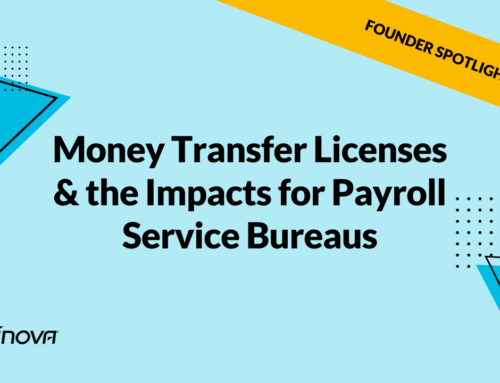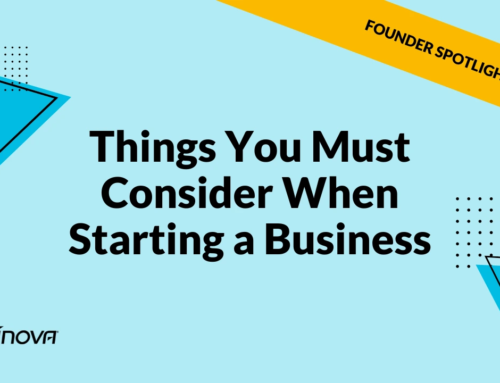My unconventional definition of the role of the chief executive officer (CEO) in the 21st Century is not based on any scientific theories. It is not derived from an economic principle. It is rather an empirical statement based on my forty years of observation.
Entrepreneur Versus the CEO
Entrepreneurs are those who start businesses. They dream, they create, and they work, day and night and on weekends. They start businesses out of garages and warehouses, and on kitchen tables. They risk everything. Their savings, the equity in their houses, and even their loved ones are on the line to keep their dream alive. Those who hit on the right product at the right time and are halfway intelligent will quickly begin making money. Growth and profits follow.
If they are astute, they will begin creating the necessary structures to sustain their growth. They begin hiring professional managers, engineers, accountants, and marketers. Their enterprise continues to grow…to a point. If the entrepreneur does not make the transition to CEO (defined later) or does not hire an experienced CEO, the enterprise will become destabilized (at about $5M revenue) and begin a rapid decline and will implode under its own weight. Why? Entrepreneurs often do not know how to bring the enterprise to a steady state. They know how to start businesses, they know how to grow them, yet they are often devoid of the skills necessary to manage them when it reaches a certain size.
Conversely, most professional CEOs do not have what it takes to start businesses. I have seen this so many times that I cannot count them. Why this happens may become clearer with this illustration: starting a business is like getting a passenger jet off the ground. The plane starts from a standstill, moves down the runway, and begins to accelerate until the speed is well over a hundred and fifty miles an hour. There are enormous stresses and strains on the aircraft during this acceleration and subsequent ascent. The sound, shaking, and turbulence are part and parcel of the “take off.” The passengers may not be comfortable, there is no fuel efficiency, and there is often turbulence. The forces are not in a steady state. That is why the plane soars.
After the desired altitude is reached, the plane must be brought into its cruising mode, where speed, altitude, and heading are relatively constant. Acceleration is zero, yet the speed is well over five hundred miles per hour. Passengers are comfortable and the maximum distance is traversed with the optimum fuel efficiency.
The dynamics of the plane during takeoff cannot be sustained. Similarly, no plane can take off the ground with the parameter settings of cruising. Entrepreneurs get planes off the ground but are unable to switch to cruising (steady state) mode. CEOs operate the plane in cruising mode but do not know how to get the darn thing off the ground. The dance and handoff between these two are fascinating to observe. There are rare few who can do both. Entrepreneurs like Steve Jobs, Michael Dell, Jeff Bezos, and Elon Musk have managed to transition into effective CEOs; they are all amazing.
What is a Business or Enterprise?
Any business or enterprise brings capital, employees, and customers (constituent forces) together to deliver a desired value to customers at a profit. I have not included products in the above equation because products/services are implied in the employees. The more efficient the business is, the more profit it generates. To maximize and stabilize ROI one must stabilize the business and thus its constituent forces. How? First, we must understand the forces.
The Constituent Forces
Let us start by describing the three constituent forces and their natural “self-interests.” Pay close attention to the words, natural self-interest. Also note that in describing the natural self-interest of each group, I exaggerate to better illustrate.
- Shareholders (Investors) are the people who provide the capital. Their singular interest is to maximize their ROI. In the extreme, they would pay all employees minimum wage with no benefits and work them eighty hours a week. They also would charge customers the maximum price and deliver the minimum services. Doing this will serve their “self-interest” which is the maximization of their ROI.
- Employees are the people who provide goods and services to customers. They are the conduits of the “deliverables.” In the extreme, they would all want six-figure salaries and extravagant benefits such as country club memberships, a personal chef, and other benefits. They would work thirty hours a week and take four weeks of vacation per year. Doing this would serve their self-interest, which is to maximize their comfort while minimizing what they must deliver.
- Customers receive goods and services and pay money in exchange. In the extreme, they would pay the lowest price and expect the highest quality of goods and services. They expect flawless products, immediately available, backed by 24/7 customer support, and manned by geniuses who can answer their questions immediately, free of charge. This would serve their natural self-interest.
These constituent forces act like a three-way tug-of-war on business. Who is sitting in the middle? Who is charged with the responsibility of keeping these conflicting interests in check? The CEO. Can he allow one constituent force to dominate the other two? Temporarily, yes. Long-term, absolutely not.
Out-of-Balance Conditions
I have looked far and wide to find examples of businesses where one constituent force dominated the other two. I have not found any. This indicates that when one constituent force dominates the other two, the business becomes so unstable it simply does not stick around to make a mark. There are plenty of cases where two constituencies dominate the third.
Condition 1: The interests of shareholders and employees dominate the interests of customers. The perfect example of this condition is the U.S. auto industry in the late 70s and early 80s. The shareholders were getting fat dividends. The employees, leveraging their union muscle, were extorting seventy dollars-per-hour wages while producing inferior cars. The interests of customers were not met.
So, what happened? The customers fled. Where? To foreign cars. It took master manager Lee Iacocca to reign in the unions and reduce wages in exchange for job security and board seats. He reigned in the shareholders by suspending dividends for several years. He began serving the interests of customers. In short, he balanced an out-of-balance condition.
The results were astonishing. The floundering Chrysler stock soared from four to forty dollars per share in ten years, and that included two stock splits.
Condition 2: The interests of employees and customers dominate the interests of shareholders. The perfect example of this condition is the dot-com world of the 90s. All the dot-com entrepreneurs and their startup partners took fat salaries. I lost a couple of $60k employees to the craze, who were paid $90k per year. Unfortunately, both lost their high-tech jobs and then wanted to come back.
The interests of the customers were also excessively served in the dot-com world. They received great value at bargain-basement prices. Often, free. What happened to the shareholders? They got shafted. Their investments went up in smoke. So, what was the result? The investors fled. They dumped their shares. The stock market crashed. For a long while, no dot-com company could get a penny of funding.
Condition 3: The interests of shareholders and customers dominate the interests of employees. The perfect example of this condition is the fast-food industry in the US. They provide great value to customers. Until recently, they provided excellent ROI to shareholders. The employees have traditionally been paid low minimum wages with no benefits or opportunity for advancement. Well, the sands of time have shifted. The industry’s profits have plummeted. Why? They all cite high employee turnover (over 200%), scarcity of applicants, amid low morale as the primary reason.
So, what happened? The employees fled. The industry is plagued by its inability to attract employees. Starbucks has been a pioneer in correcting this imbalance. They charge four dollars for a cup of coffee. Employees earn $ 15 dollars per hour, or more, with full benefits and stock options. Turnover is low, the product is premium quality, service is impeccable, and profits have soared. In short, Starbucks has brought balance to the equation, and it has succeeded. The industry is going through a revolution. More companies are following Starbuck’s lead.
Any way you look at it, long term, the only way for a business to succeed is to maintain an equilibrium between its constituent forces. The only way.
One of my heroes, Dr. Henry Kissinger, in his memoirs says (I paraphrase): “In the final analysis, all people, nations, institutions, and corporations act in their natural self-interest.” I believe this statement to be universally true. Left to their own devices, any one of the three constituent forces in a business will dominate the other two and, in turn, ruin the business.
Who can ensure an equitable balance is maintained? The CEO.
Does the above assertion in any way, shape, or fashion preclude maximizing ROI for investors? Absolutely not – it is the only way to do so.




